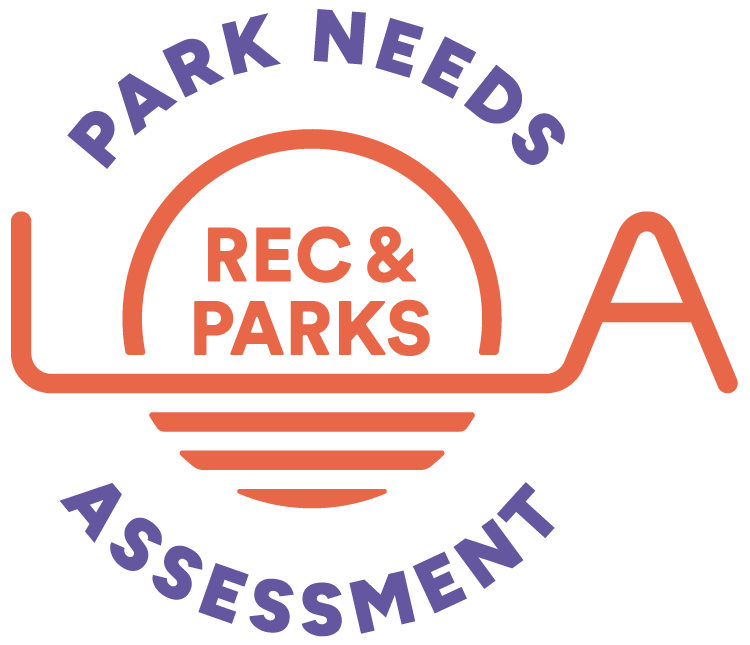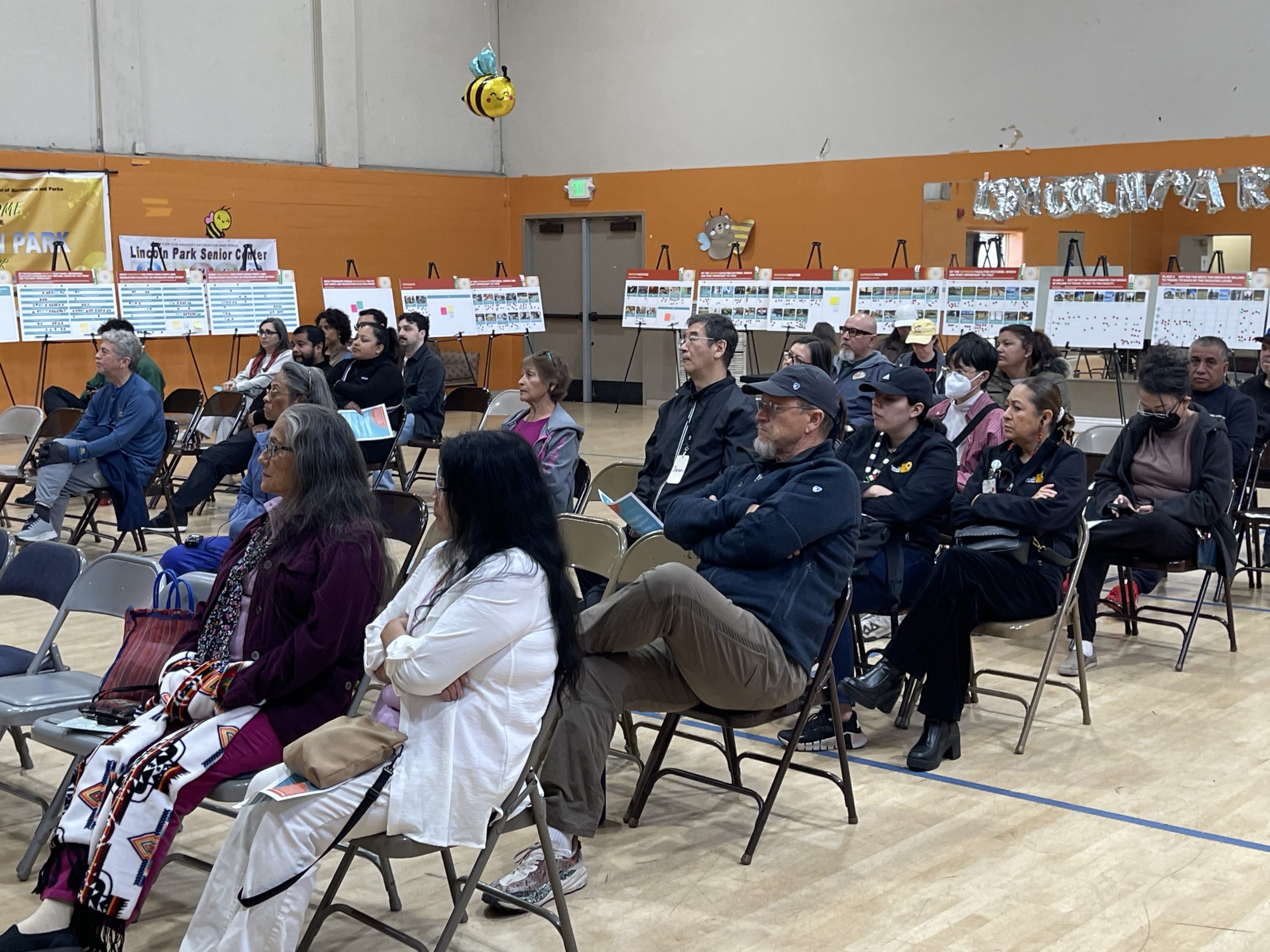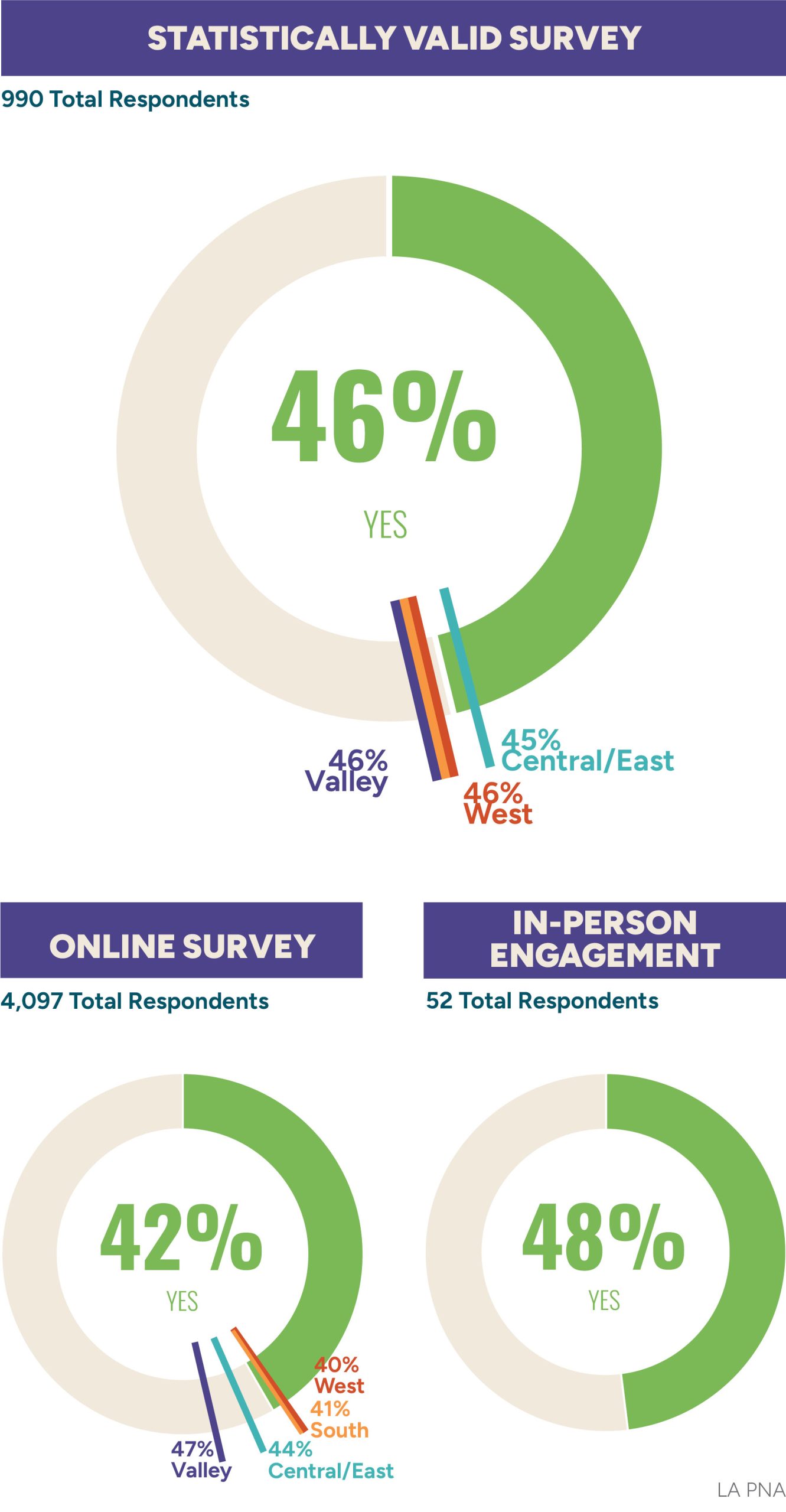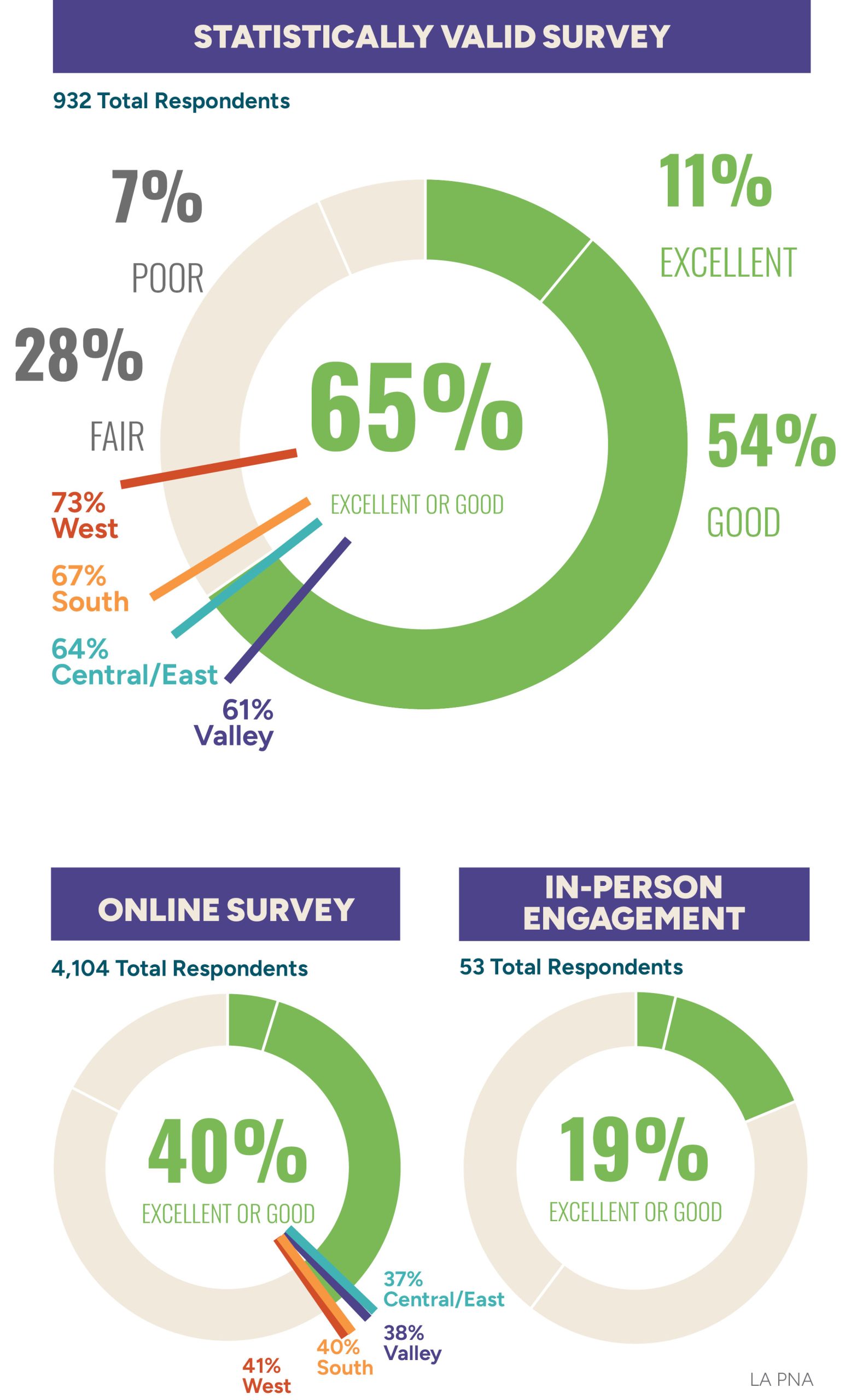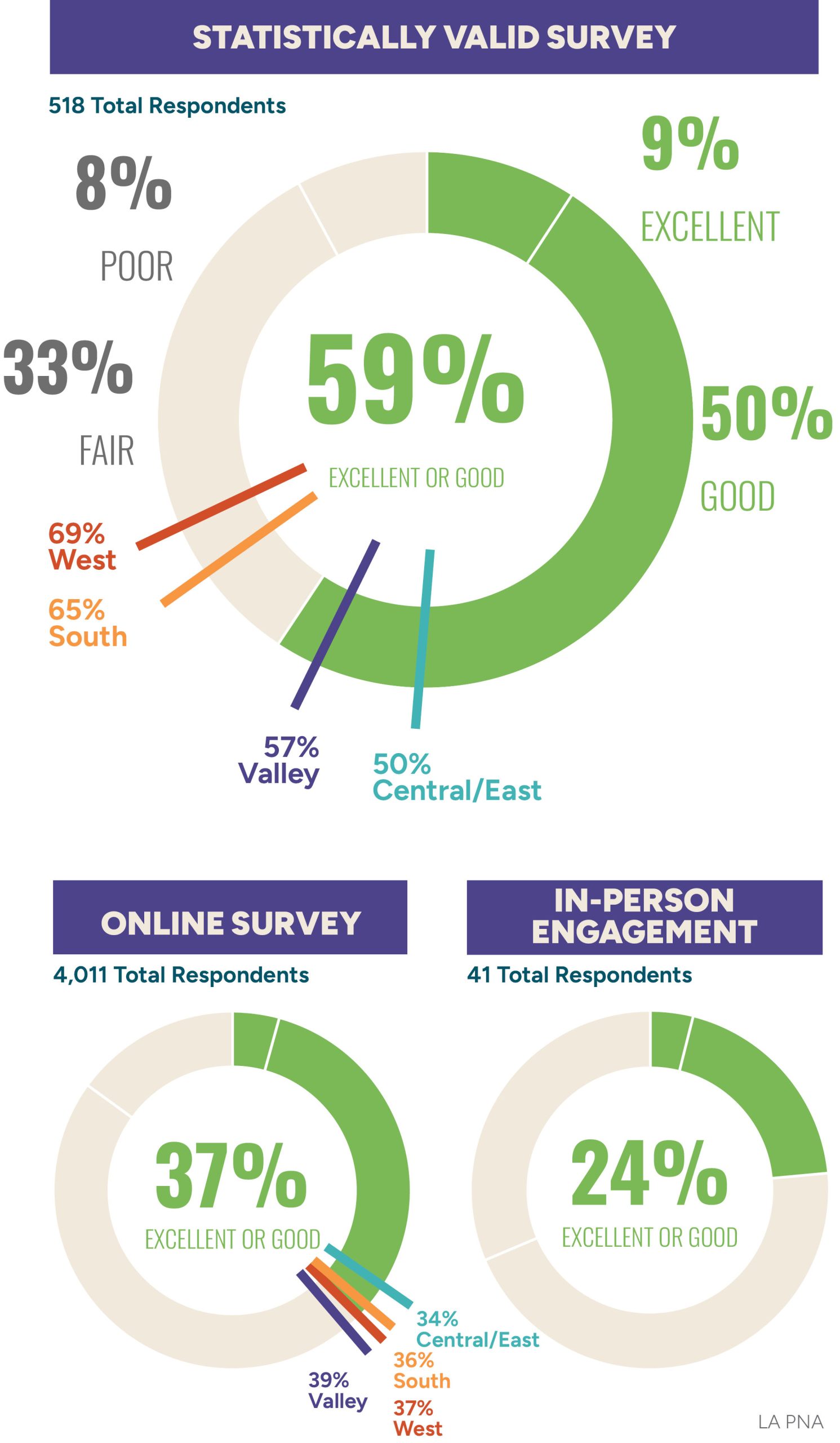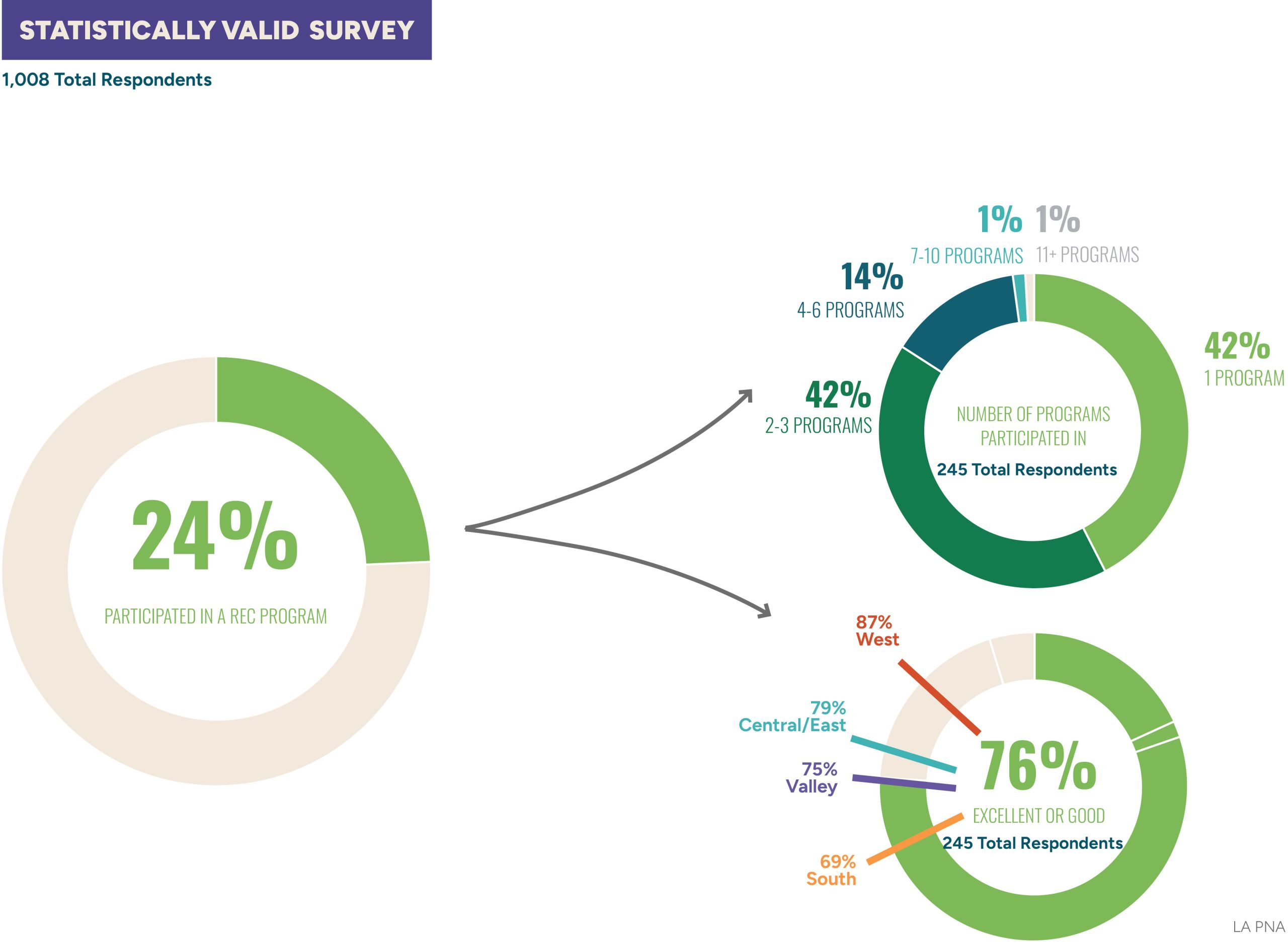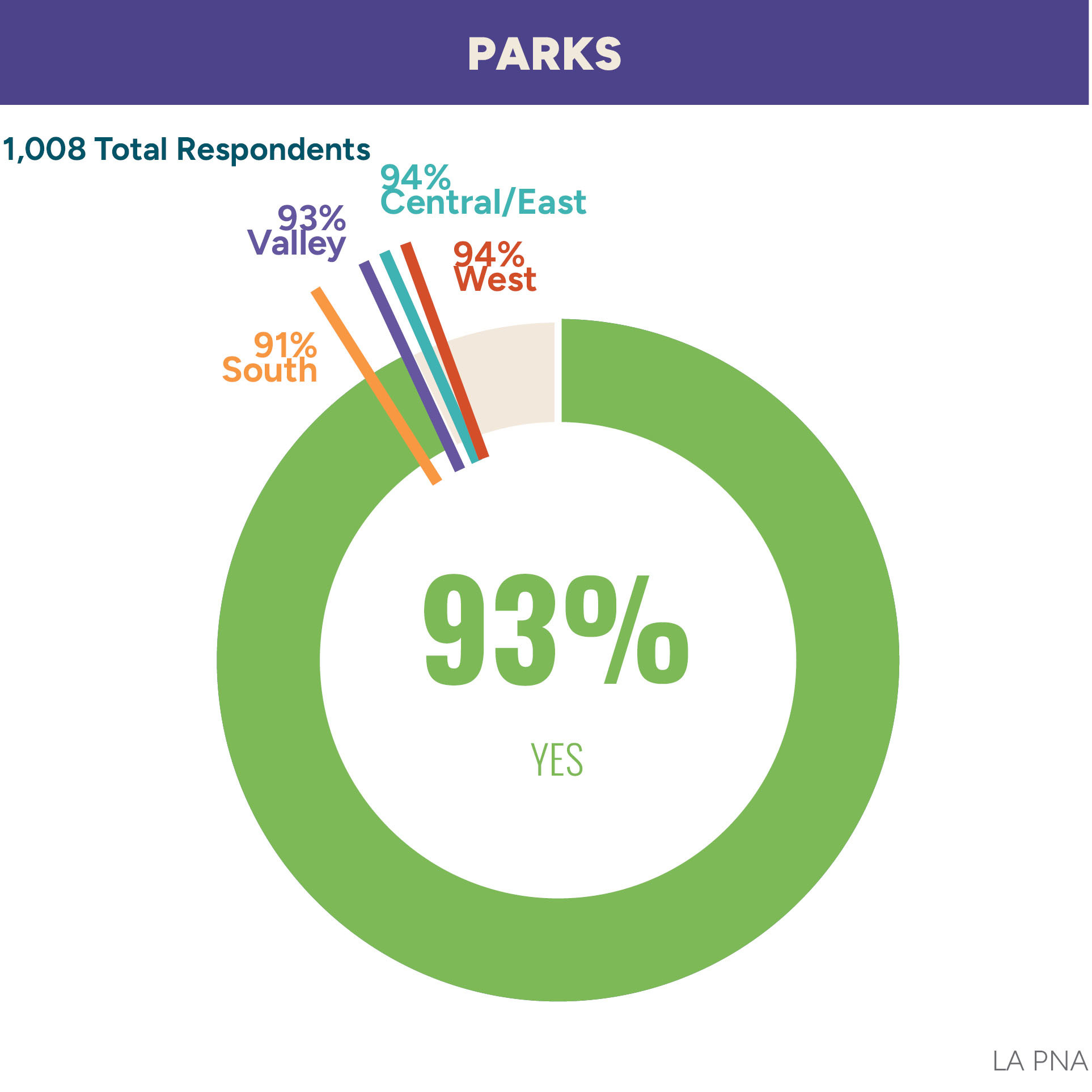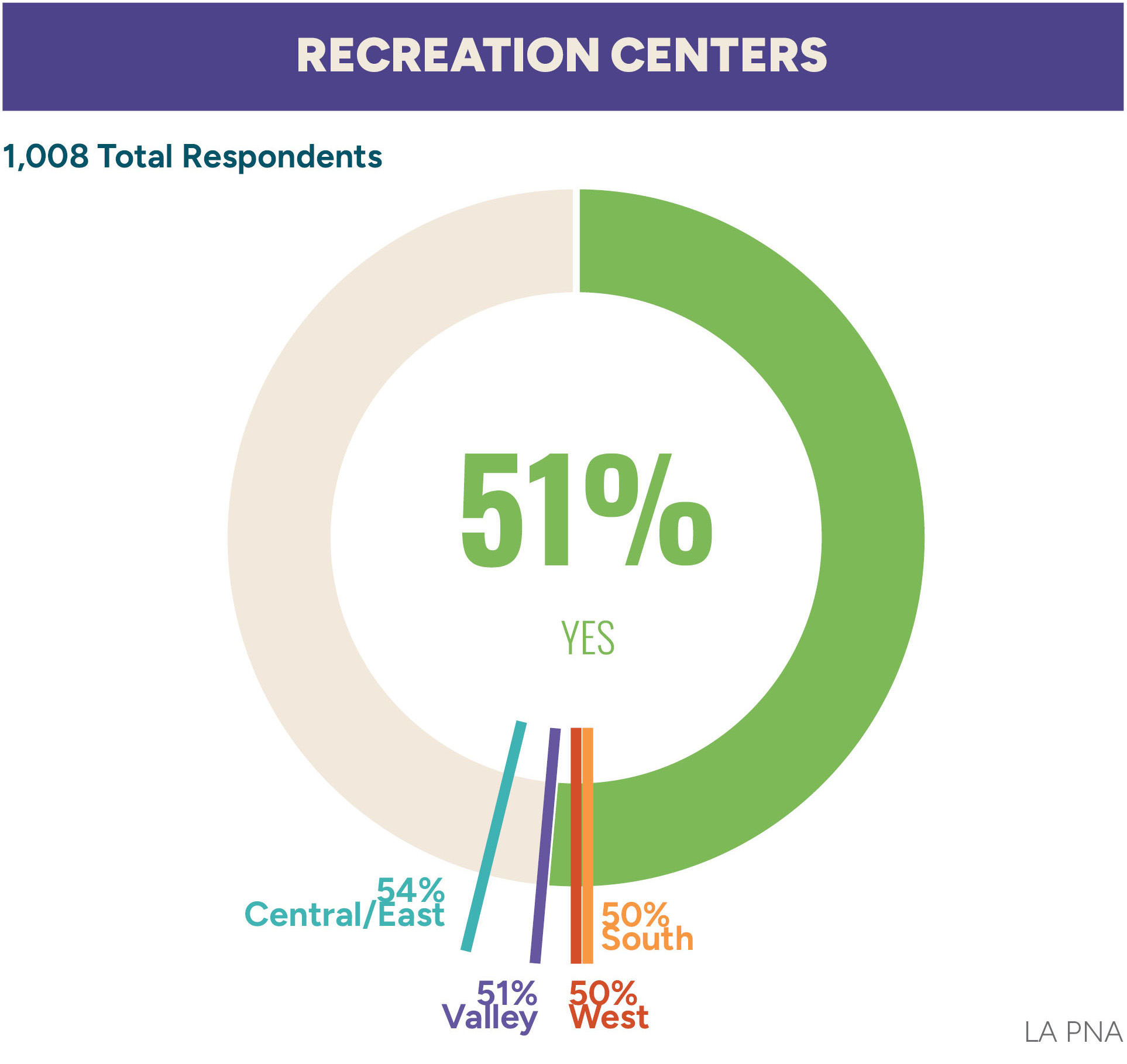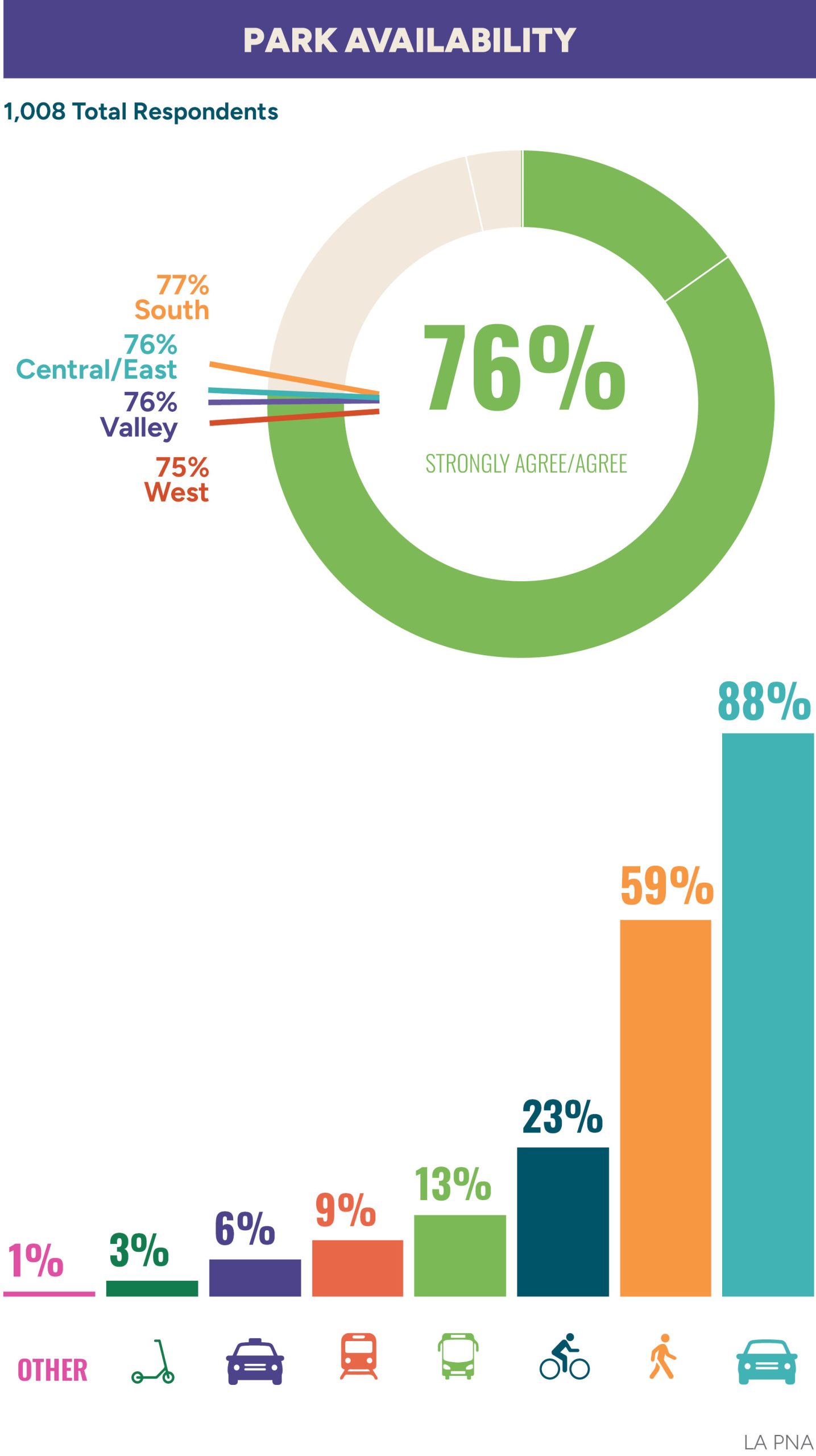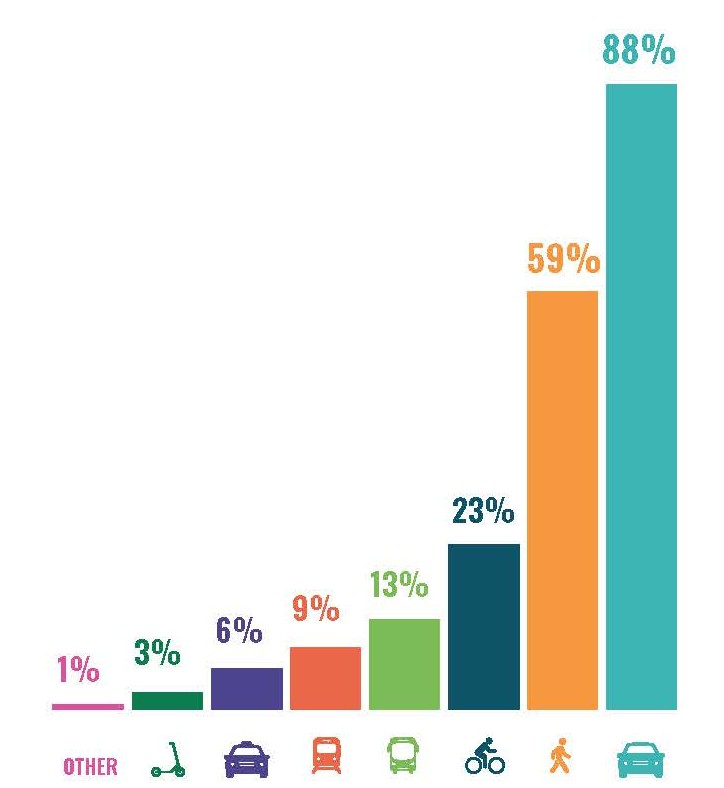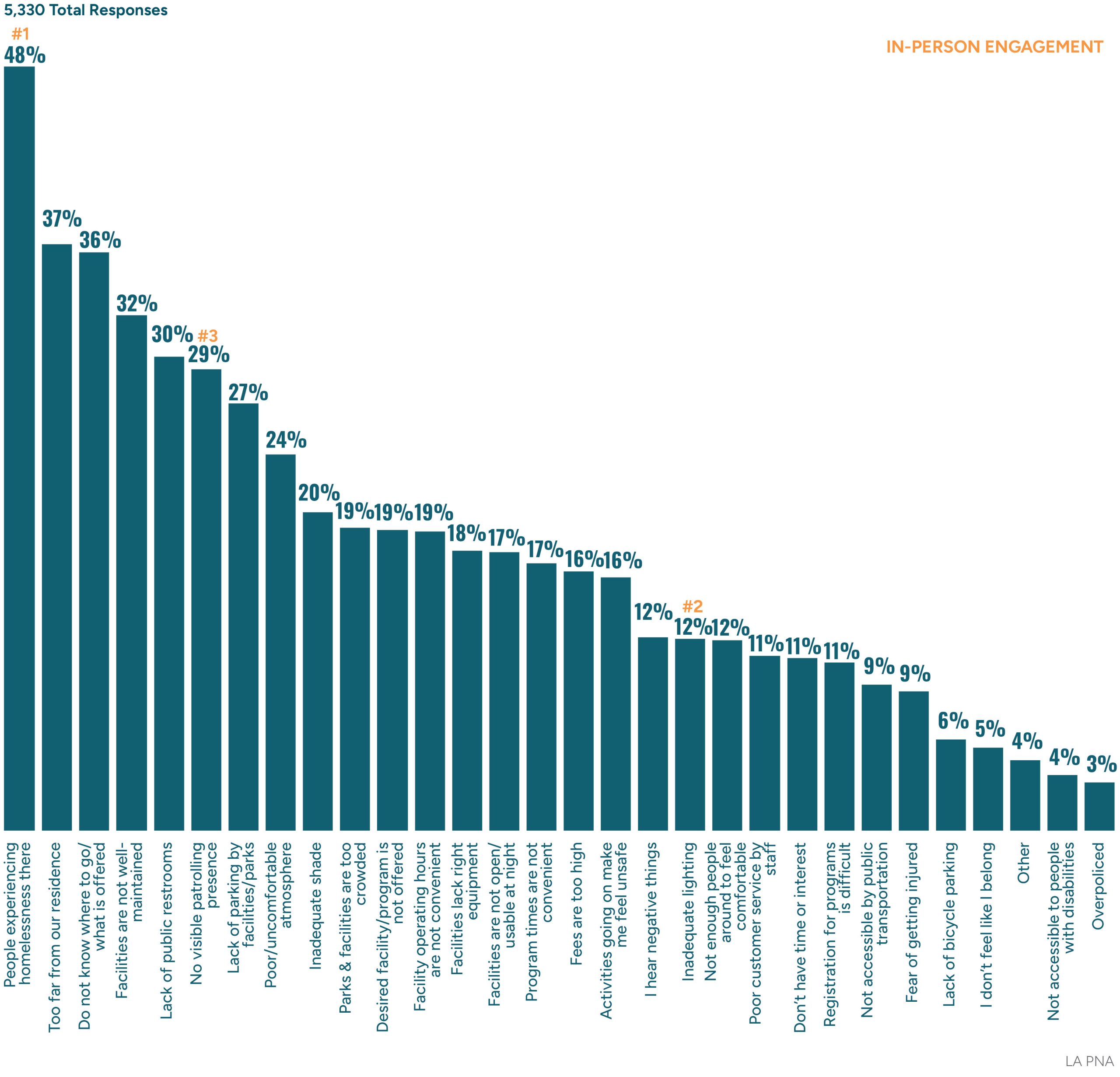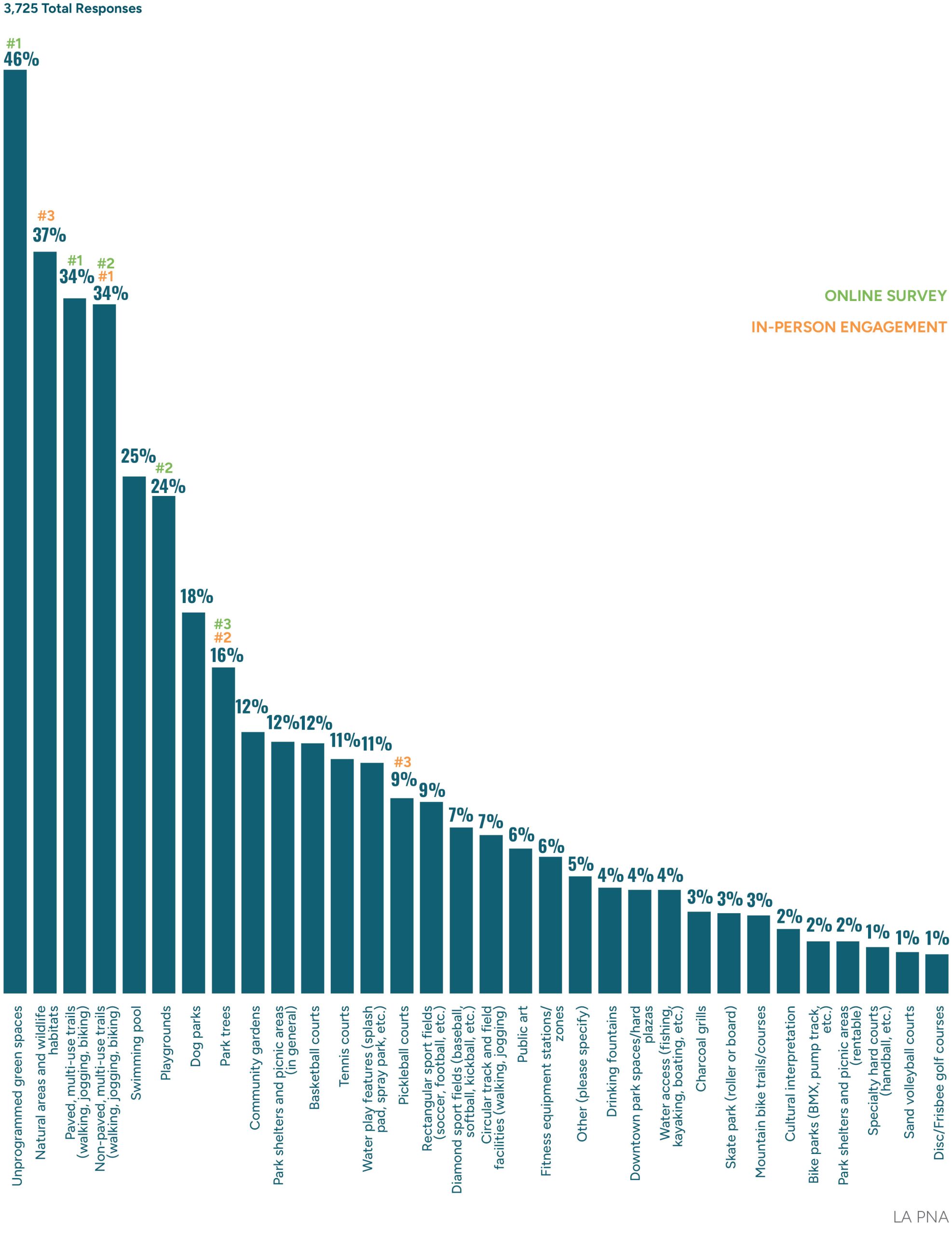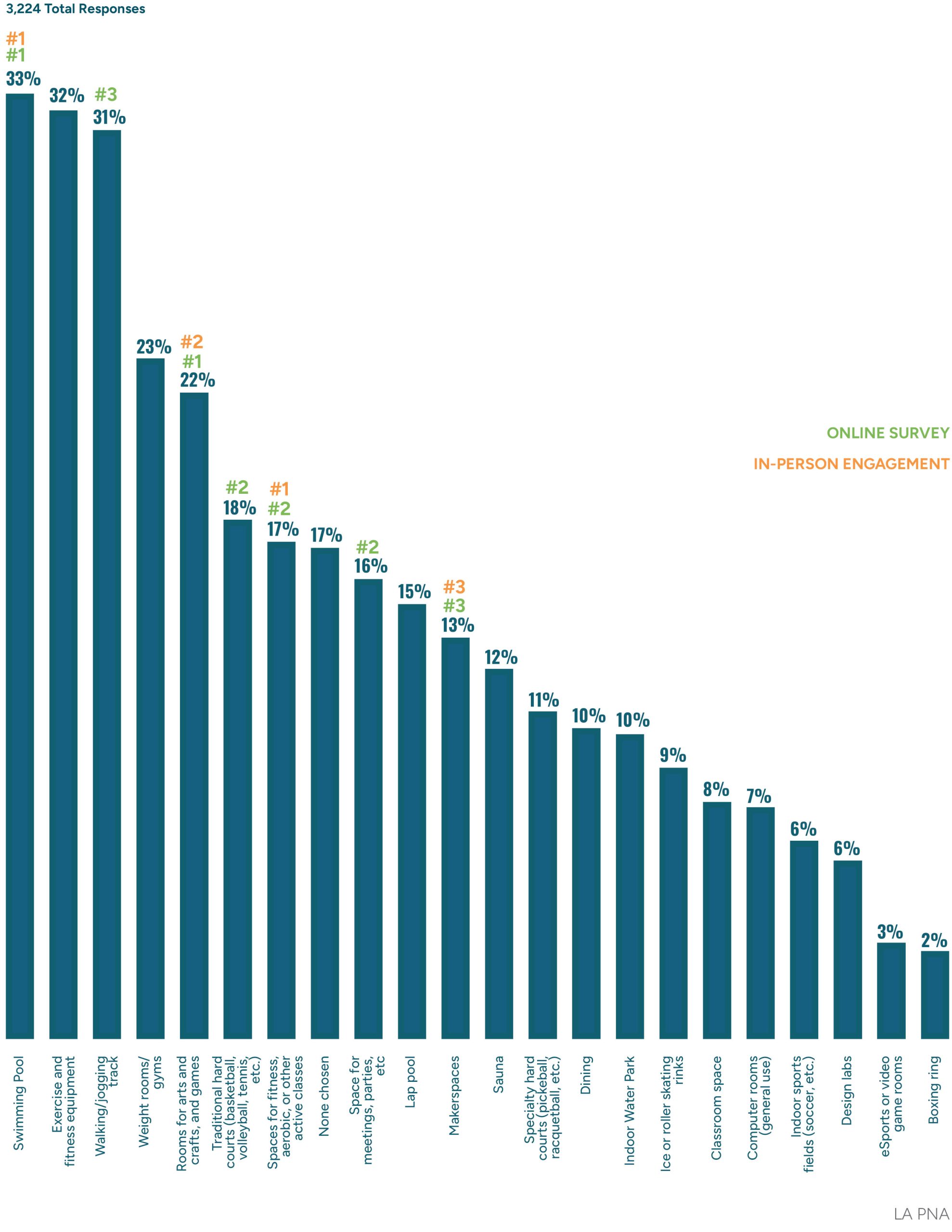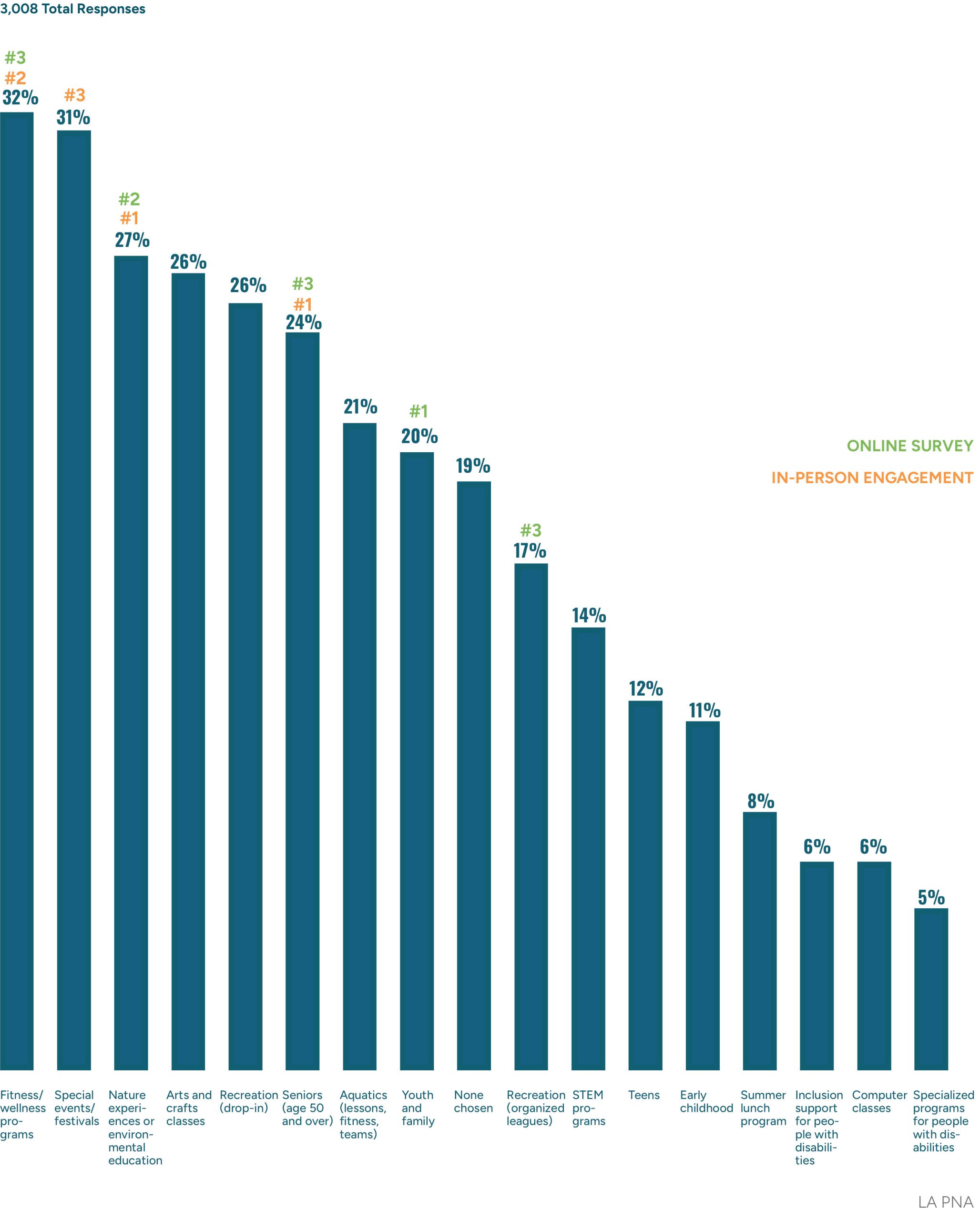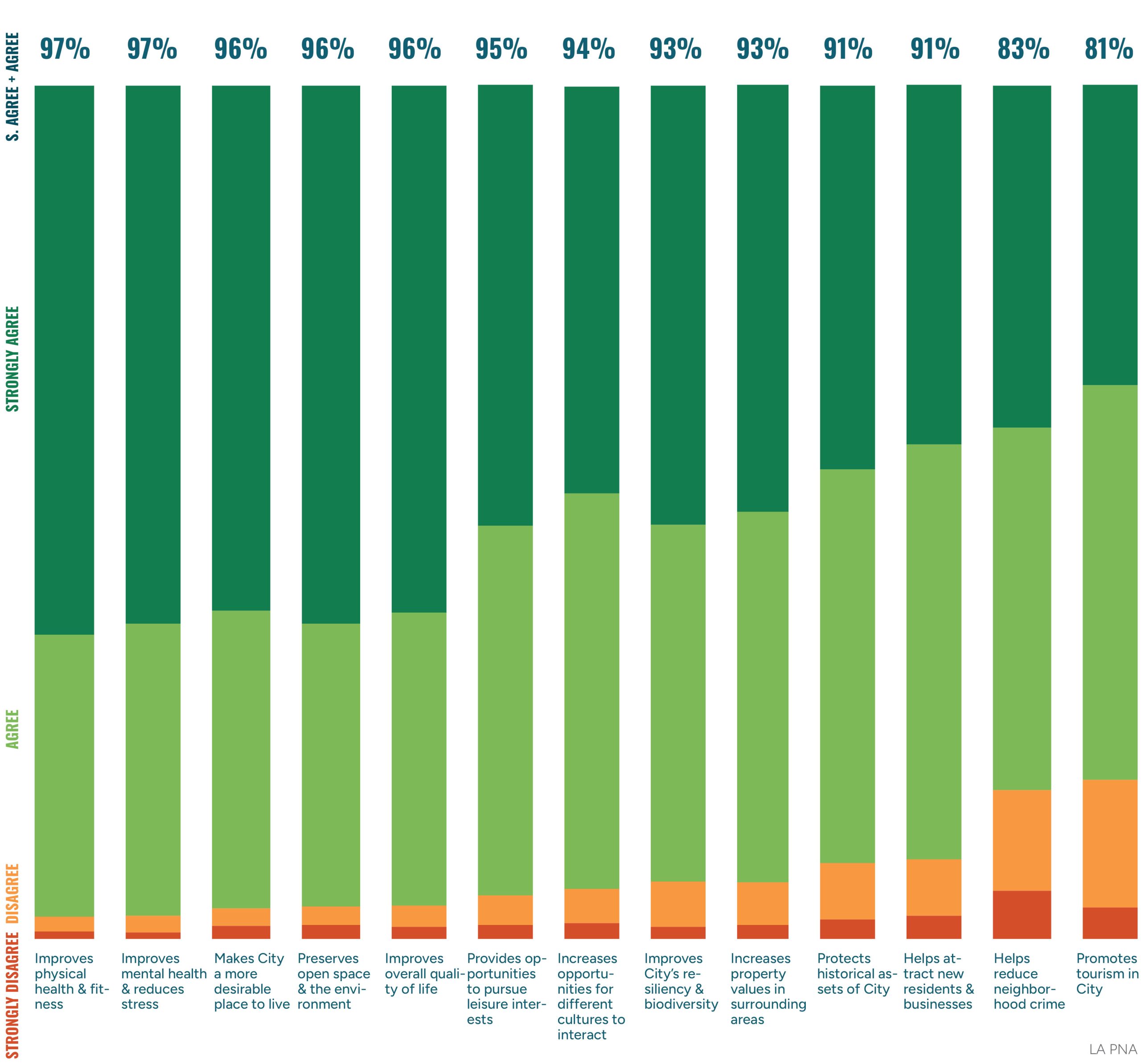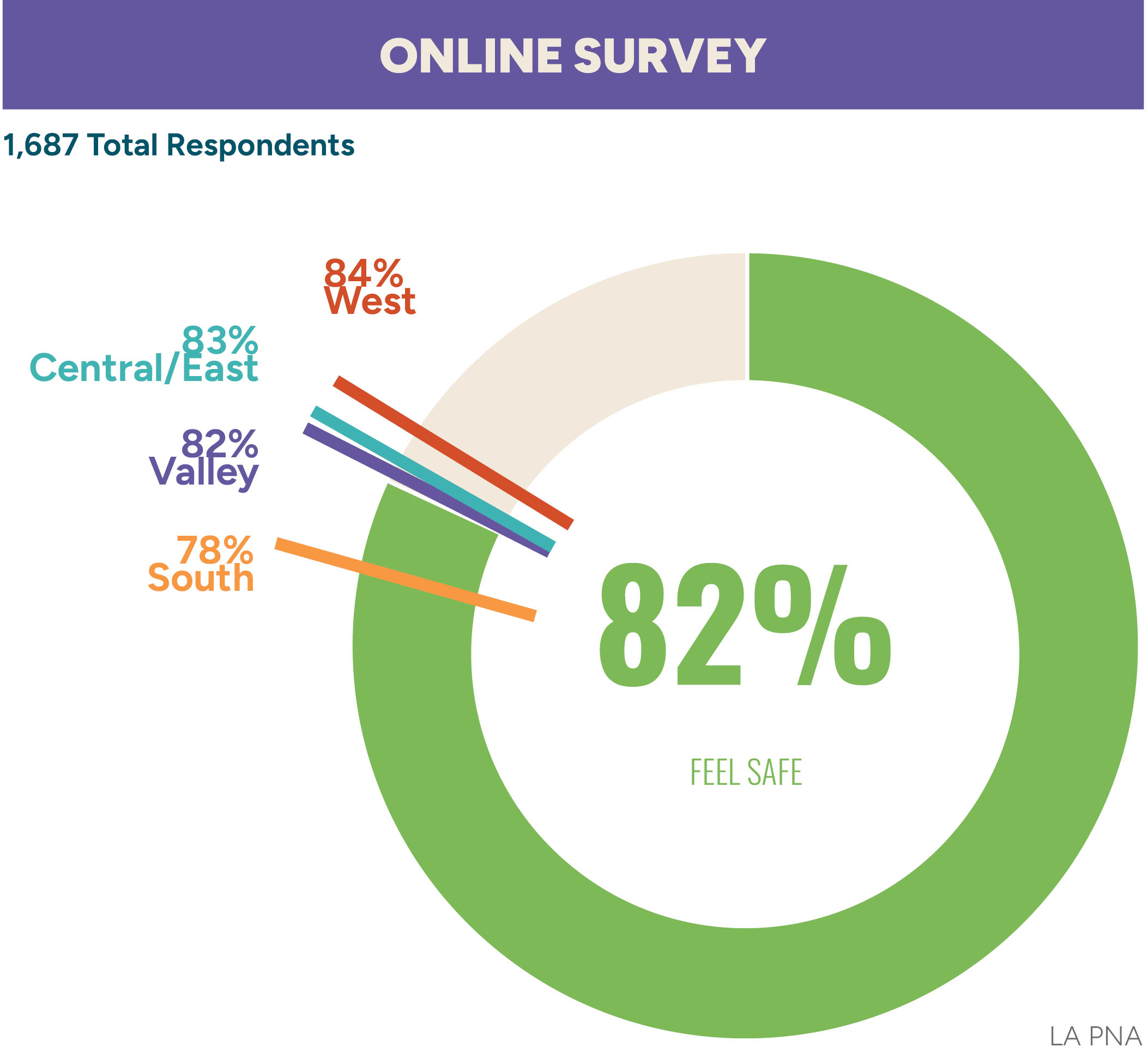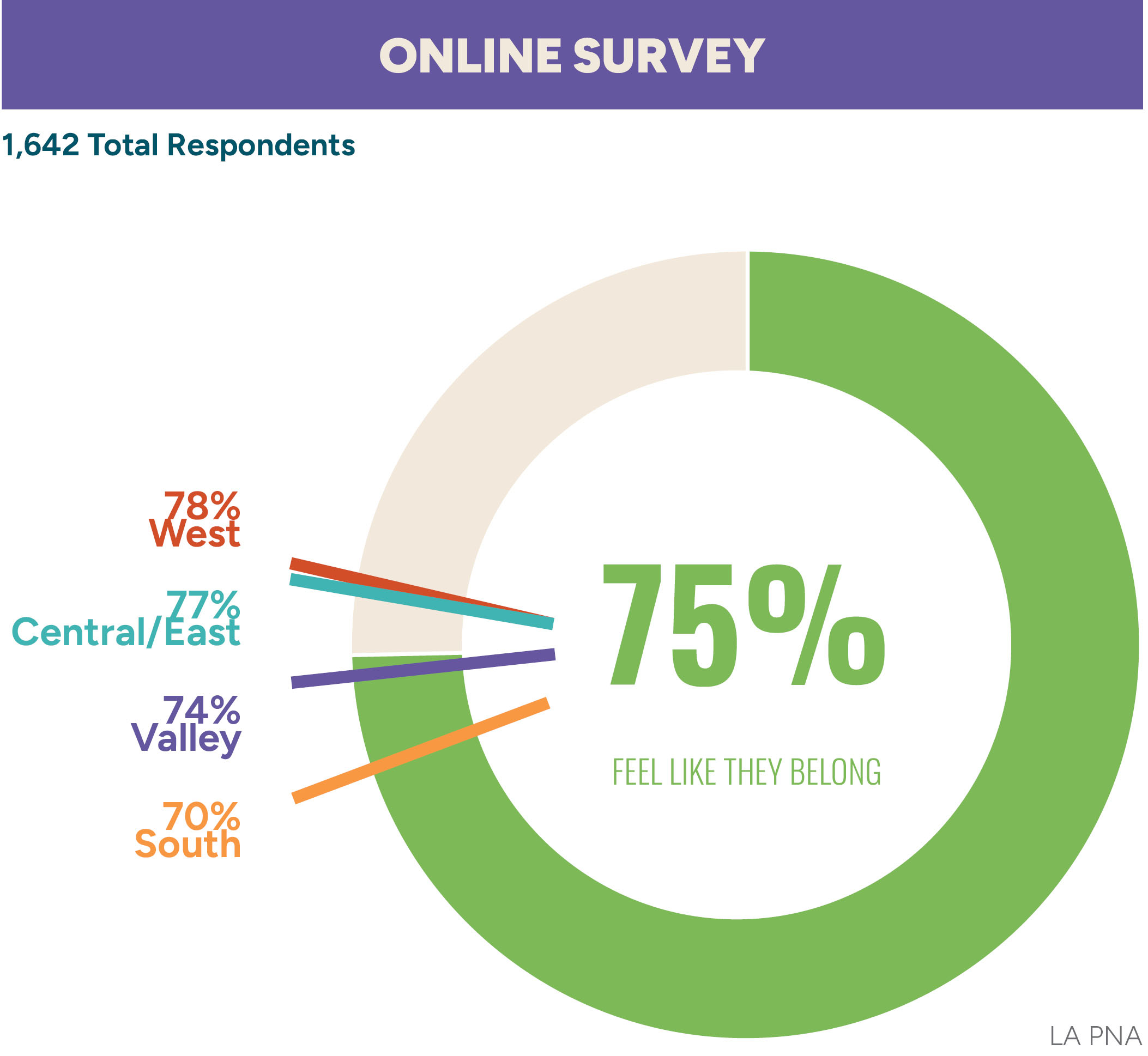Questions solicited opinions about the conditions of parks and recreation centers, how people access parks, barriers to access, and the services and benefits provided by RAP’s programs and facilities.
Surveys were mailed to a random sample of households in the city to get a statistically valid representation of Angelenos’ opinions, and an open survey was available on the PNA website. The open survey had short and long versions tailored to the amount of time people had available.
Over 5,600 surveys were completed across the statistically valid survey, the short online survey, and the long online survey.
How to Read the Survey Takeaways
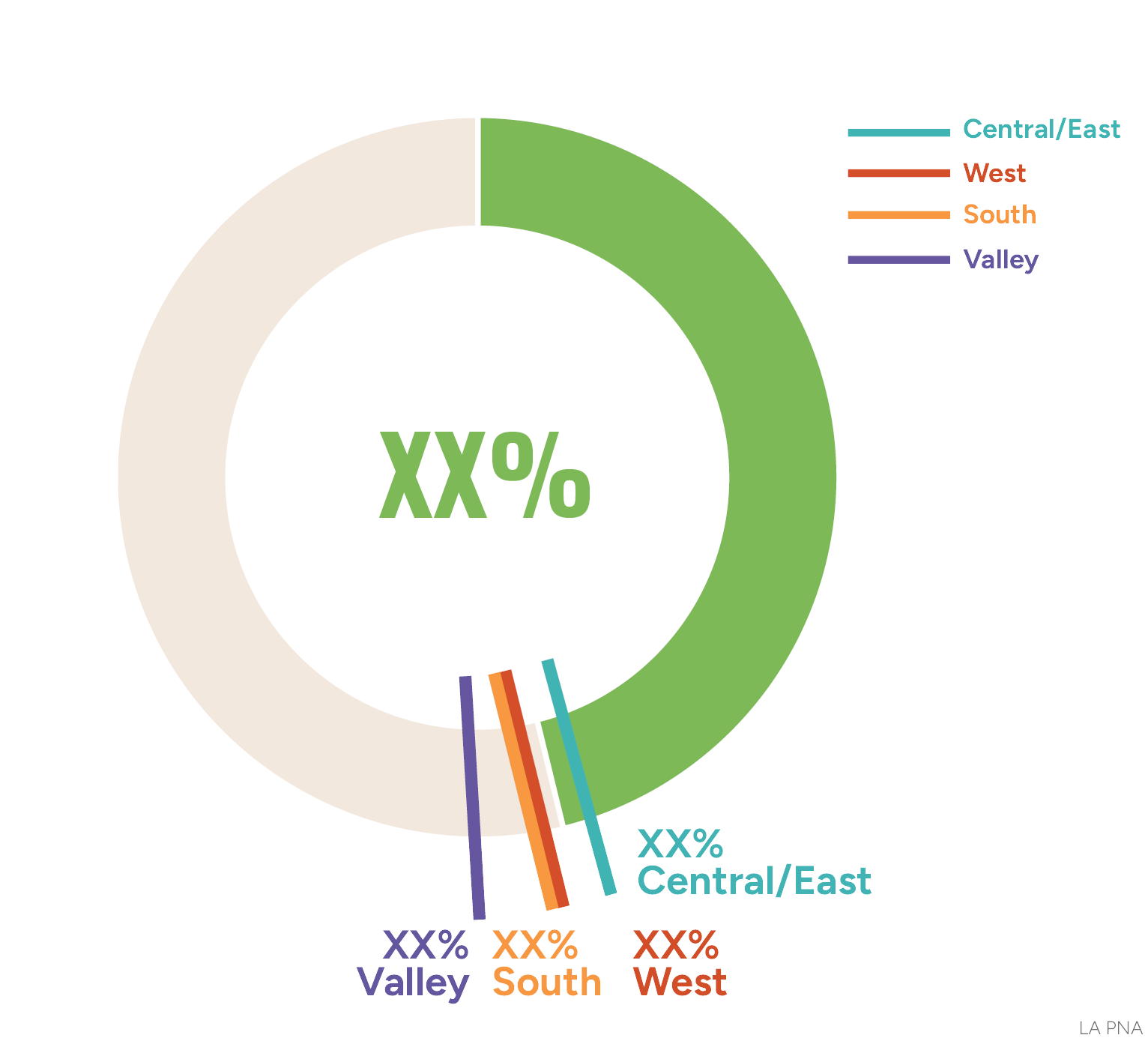
Each tick mark represents a different region. The percentage shown should be compared to the statistic shown in the middle of the pie chart.
Which households agree?
Respondents from households with XXX and households with XXX are more likely to agree…
Which households are less likely to agree?
Respondents from households over XXX are less likely to agree…
Callouts show households types whose responses differed from the overall results by at least 3.1%.
Cross-tab information has a higher margin of error due to a smaller number of respondents.
Cross-Tabular Information
- Region
- Household Type
- Race/Ethnicity
- Annual Household Income
- Years in City
- Council District
Park Access
Access and Availability
Less than half of respondents feel that there are enough parks and/or recreation centers within walking distance of their home. The majority of respondents typically drive or walk to parks and recreation centers, while less than a quarter bike or take transit. Most respondents have visited a City of LA park within the past year, while only about half have visited a City of LA recreation center.
Less than half of respondents feel that there are enough parks and/or recreation centers within walking distance of their home.
Which households agree?
Respondents from households with older children aged 10-19 (50%) and households over age 55 and without children (50%) are more likely to agree there are sufficient parks and recreation centers within walking distance.
Which households are less likely to agree?
Respondents from households making $10K – $40K annually (39%) are less likely to agree that there are enough parks and recreation centers within walking distance.
Conditions: Parks
Overall Condition
Respondents to the statistically valid survey were more positive about the physical condition of parks than respondents to the online survey and in-person meeting participants. Nearly two thirds of statistically valid survey respondents think parks are in excellent or good condition, compared with 40% for the online survey and 10% for in-person meeting participants.
Less than 40% of respondents think parks are in excellent or good condition.
Which households agree?
Respondents from households who have lived in the City for 11 – 20 years (74%) agree that parks are in excellent or good condition.
Which households are less likely to agree?
Respondents from households who have lived in LA for more than 31 years (61%), households with older children aged 10 – 19 (61%), and households making more than $150K annually (59%) are less likely to agree that parks are in excellent or good condition.
Conditions: Recreation Centers
Overall Condition
Respondents to the statistically valid survey on the physical condition of recreation centers were more positive than those who responded online or in-person. While nearly two-thirds of statistically valid survey respondents think recreation centers are in excellent or good condition, only 37% of online respondents and 24% of in-person respondents agree.
Less than half of respondents think recreation centers are in excellent or good condition.
Which households agree?
Respondents from households who have lived in the City for less than 10 years (72%) agree that recreation centers are in excellent or good condition.
Which households are less likely to agree?
Respondents from households with young children aged under 10 (51%) and households making more than $150K annually (48%) are less likely to agree that recreation centers are in excellent or good condition.
Program Participation
Participation
About one in four statistically valid survey respondents participated in a recreation program in the past year. Of those who participated, over 75% rated the quality of the recreation programs as excellent or good. And over 75% of respondents agree that recreation of park facilities are available when they want to use them.
Of those that participated, over 75% rated the quality of recreation programs as excellent or good.
Park Visitation
Visitation
Visitation varies between parks and recreation centers. The majority of respondents have visited a park in the last year, while only half of respondents have visited a recreation center in the same time frame.
Most respondents have visited a City of LA park in the past year, while only about half have visited a City of LA recreation center.
Have you visited any parks and recreation centers offered by City Recreation & Parks in the past 12 months?
Which households agree?
Respondents from households with young children (<10) are more
likely to have visited a park in the last year (97%).
Which households are less likely to agree?
Respondents from households making under $10K annually are less likely to have visited a park in the last year (13%).
Which households agree?
Respondents from households with young children aged under 10 (67%) and older children aged 10 – 19 (65%) are more likely to have visited a recreation center in the last year.
Which households are less likely to agree?
Respondents from Asian households (42%) and households who have lived in the City for less than 5 years (40%) are less likely to have visited a recreation center in the last year.
Park Availability
Availability
Respondents to the statistically valid survey generally agree that parks or recreation facilities are available when they want to use them, with more than three quarters of respondents strongly agreeing or agreeing.
More than 3/4 of respondents agree that recreation or park facilities are available when they want to use them.
Please rate your level of agreement with the following statement: Recreation or parks facilities are always available when I want to use them.
Which households agree?
Respondents from households with young children (<10) are more
likely to have visited a park in the last year (97%).
Which households are less likely to agree?
Respondents from households making under $10K annually are less likely to have visited a park in the last year (13%).
Barriers to Visiting Parks
Barriers
The top barrier to visiting parks for respondents is homelessness, with a little under half of respondents ranking it as their top reason. Other top barriers that prevent respondents from visiting parks include distance from residences, lack of information on where to go or what is offered at parks and recreation facilities, and lack of maintenance.
People experiencing homelessness is the most common reason respondents do not visit.
Please check all the reasons that prevent you or members of your household from visiting parks and recreation centers more often.
Top Four Most Important Indoor/Outdoor Facilities and Programs
The Most Important Indoor Facilities
- Swimming Pool
- Exercise and Fitness Equipment
- Walking / Jogging Track
- Weight Rooms / Gyms
The Most Important Programs
- Fitness / Wellness Program
- Special Events / Festivals
- Nature Experiences or Environmental Education
- Arts and Crafts Classes
The Most Important Outdoor Facilities
- Unprogrammed Green Spaces
- Natural Areas and Wildlife Habitats
- Paved, Multi-Use Trails (Walking, Jogging, Biking)
- Non-Paved, Multi-Use Trails (Walking, Jogging, Biking)
The results for outdoor facilities, indoor facilities, and programs were also broken down by region. While there were some differences and variation, there was a lot of overlap and alignment on unprogrammed green space, trails, indoor walking tracks, indoor pools, and events/festivals.
Benefits of Parks
Benefits
Overall, respondents agree that there are a wide range of benefits that parks and recreation facilities provide. Some of the benefits that respondents agreed on include physical health and fitness, mental health and stress reduction, quality of life, and preservation of open space and the environment.
Most respondents agree that parks, trails, recreation facilities, and programs provide a wide range of benefits.
The following are some benefits parks, trails, recreation facilities, and programs provide. For each benefit, please indicate your level of agreement.
Safety & Belonging
Safety, Belonging, and Reasons They Don’t Visit
More than three in four online survey respondents feel safe or feel that they belong at at least one park or recreation facility. When asked to select the reasons respondents do not visit parks and recreation facilities, close to half of respondents cited the presence of people experiencing homelessness, followed by parks being too far from where they live, not knowing where to go or what is offered, and facilities not being well-maintained.
More than 3/4 of online respondents feel safe and/or feel like they belong in at least one park or recreation facility.
Financial Support
Benefits of Parks and Support for Bond
Most respondents agreed that parks, trails, recreation facilities, and programs provide a wide range of benefits, with agreement ranging from 81% to 97%.
More than half of respondents are supportive of a bond, tax, or levy to fund parks and recreation facilities. In-person meeting attendees were most supportive, at 70%, followed by 63% of online respondents, and 58% of statistically valid survey respondents. While in-person and online respondents had a lower opinion of the conditions of parks and recreation centers, they were also more willing to provide financial support.
Close to 2/3 of respondents are supportive of a bond, tax, or levy to fund parks and recreation facilities.
Which households agree?
Respondents from households with young children aged under 10 (62%) and households who have lived in the City for less than 5 years (70%) are more likely to support funding for parks and recreation facilities.
Which households are less likely to agree?
Respondents from households over the age of 55 and without children (50%), and households who have lived in the City for 6 – 10 years (50%)
and more than 31 years (51%) are less supportive of funding parks and recreation facilities.
